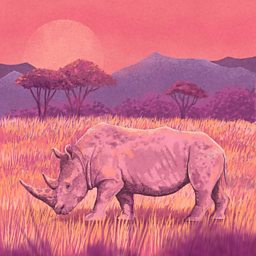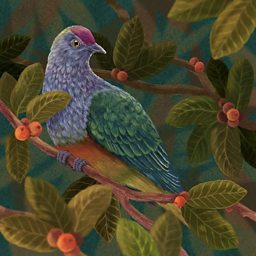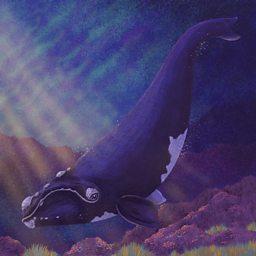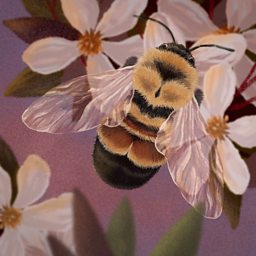Five amazing species we鈥檙e close to losing forever
To mark the release of Sir David Attenborough's new film Extinction: The Facts on iPlayer, Indian artist Rohan Dahotre is spreading wildlife awareness through his illustrations of the natural world.
In this collection Rohan has created a group of beautiful images that highlight five species on the brink of extinction.
Northern white rhino

With only two known northern white rhinos in existence, the species has been declared functionally extinct and the last remaining pair, mother and daughter Najin and Fatu, are protected around the clock by armed guards at Ol Pejeta Conservancy in Kenya.
The species has been declared functionally extinct
Poaching and civil wars in the Democratic Republic of the Congo and South Sudan had a devastating impact on the species and their numbers fell from 30 in 2003 to just four in 2005.
The species' only chance for survival now rests with cutting-edge reproductive science. Eggs from Naijin and Fatu were fertilised using sperm collected from two northern white rhinos before they died. It’s hoped these embryos can be implanted into surrogate southern white rhino mothers.

Rapa fruit-dove

The beautiful pink-headed Rapa fruit-dove is one of the rarest birds in the world with an estimated population of just 160. Its home is the tiny island of Rapa Iti in French Polynesia.
One of the rarest birds in the world
In 2018, the species was classified as because of its small population and the predicted continued decline.
Its greatest threat is habitat loss, but it also faces danger from its predators - feral cats and Polynesian rats.

North Atlantic right whale

The history of the North Atlantic right whale’s decline is right there in its name – whalers gave them their moniker as the animal’s behaviour and physiology made them the ‘right’ whale to hunt.
The history of the North Atlantic right whale鈥檚 decline is right there in its name
While they are no longer hunted, the whales are now threatened by entanglements in fishing gear and ship strikes. Photos suggest 82% of right whales show signs of being entangled at least once in their lives.
Today the species is classified as , with an estimated 409 whales remaining. Canada and the US have both made efforts to reduce whale deaths due to ship strikes and entanglements including speed and gear restrictions for vessels. Scientists are also trying to understand why the whales’ birth rates are so low.

Rusty patched bumble bee

This tiny creature might be easy to overlook, but the rusty patched bumble bee’s role and importance in the food chain as a pollinator cannot be overstated.
The rusty patched bumble bee鈥檚 role and importance in the food chain as a pollinator cannot be overstated.
Now , studies have shown a significant reduction in the range and abundance of this once common species.
The main threats to the bee are disease spread from commercial bees, habitat loss, pesticide use, and climate change.

Gratix's Paphiopedilum

It’s not just animal species at threat of extinction.
It鈥檚 not just animal species at threat of extinction.
With fewer than 250 mature individuals remaining, the rare Gratix's Paphiopedilum orchid is now listed as .
Found in China, Vietnam, Laos and Thailand, the population is decreasing for a number of reasons including logging, fires, deforestation, mining activities, and – due to its beauty – ruthless collection for horticultural purposes, regional and international trade.

Watch now on 麻豆社 iPlayer
-
![]()
Extinction: The Facts
With a million species at risk of extinction, David Attenborough explores how this crisis of biodiversity has consequences for us all, including putting us at greater risk of pandemic diseases.

Watch web exclusive clips from Extinction: The Facts
-
![]()
The extinction vortex
When a species population gets smaller and smaller it can fall into the extinction vortex.
-
![]()
Plants and medicine
Many medicines are derived from natural molecules found in plants.
-
![]()
Keystone species
The loss of a keystone species can have a devastating impact on an ecosystem.
-
![]()
Giraffes in decline
Conservationist Robert Lemaiyan describes how giraffe populations in Africa are plummeting.





